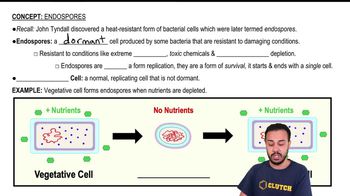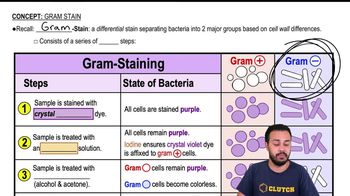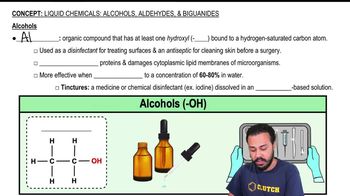Here are the essential concepts you must grasp in order to answer the question correctly.
Endospore Staining
Endospore staining is a differential staining technique used to visualize bacterial endospores, which are resistant structures formed by some bacteria to survive harsh conditions. The primary stain, carbolfuchsin, penetrates the endospores when heat is applied, making them appear red. After decolorization with acid-alcohol, the endospores retain the red color, while vegetative cells may lose the primary stain.
Recommended video:
Counterstaining
Counterstaining is a technique used in microscopy to provide contrast to the primary stain, allowing for better visualization of different cell structures. In this case, nigrosin, an acidic stain, is used to stain the vegetative cells after the decolorization step. This results in the vegetative cells appearing black against a red background of the endospores, enhancing the differentiation between the two.
Recommended video:
Acid-Alcohol Decolorization
Acid-alcohol decolorization is a critical step in the staining process that removes the primary stain from certain cells while retaining it in others, particularly endospores. This step exploits the differences in cell wall composition, where the more resistant endospores retain the carbolfuchsin stain, while the vegetative cells lose it. Understanding this process is essential for interpreting the results of the staining procedure.
Recommended video:
 Verified step by step guidance
Verified step by step guidance Verified Solution
Verified Solution



 3:23m
3:23m